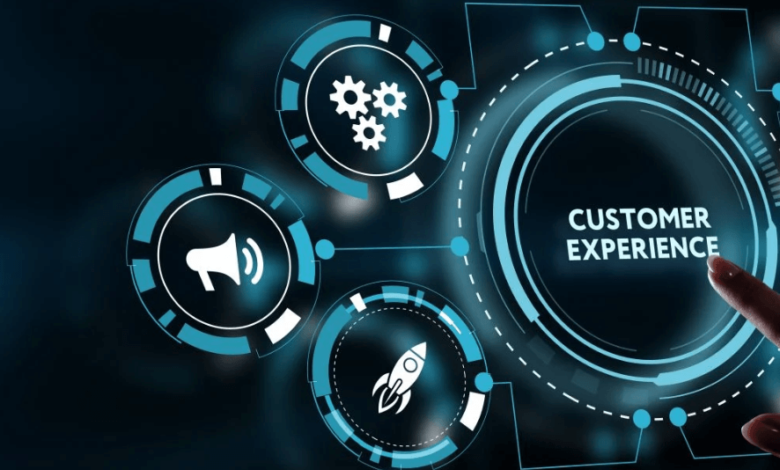What the B2B Customer Journey Looks Like Today

The business-to-business (B2B) customer journey has evolved significantly, driven by digital transformation, shifting buyer expectations, and the proliferation of data-driven technologies. Unlike the consumer-focused B2C journey, the B2B journey is complex, involving multiple stakeholders, longer decision-making processes, and a greater emphasis on value and trust. Today’s B2B buyers are more informed, digitally savvy, and demand personalized experiences that align with their business needs. This article explores the modern B2B customer journey, detailing its key stages, influences, and the strategies businesses must adopt to navigate this intricate landscape effectively.
The Shift to a Digital-First Approach
The B2B customer journey has transitioned from traditional, relationship-driven interactions to a predominantly digital-first experience. Buyers now rely heavily on online research, peer reviews, and digital touchpoints to inform their decisions. A procurement manager seeking software solutions, for instance, might begin by searching for industry reports on Google, browsing vendor websites, or engaging with thought leadership content on LinkedIn.
This digital shift reflects broader changes in buyer behavior. B2B decision-makers, often millennials or Gen X professionals, expect seamless access to information across platforms. They value efficiency and transparency, preferring self-service options like webinars, whitepapers, or demo videos over lengthy sales pitches. As a result, businesses must ensure their digital presence is robust, with user-friendly websites, optimized content, and active engagement on professional networks.
The rise of hybrid models, blending digital and in-person interactions, further shapes the journey. While digital channels dominate early research, face-to-face meetings or virtual consultations often play a role in later stages, particularly for high-value deals. Companies must balance these channels to create a cohesive experience that meets buyers where they are.
See also: What are the key techniques for successful show jumping?
Mapping the Stages of the B2B Journey
The modern B2B customer journey typically unfolds across four key stages: awareness, evaluation, decision, and post-purchase engagement. Each stage involves multiple stakeholders—executives, end-users, and procurement teams—making collaboration and consensus critical.
In the awareness stage, buyers identify a need or challenge within their organization. This might stem from internal inefficiencies, market pressures, or new regulations. They turn to digital channels for solutions, such as searching for “cloud-based ERP systems” or exploring industry forums. Businesses must capture attention here through targeted content, such as SEO-optimized blog posts or sponsored LinkedIn ads, positioning themselves as trusted authorities.
During evaluation, buyers conduct in-depth research, comparing vendors based on features, pricing, and reputation. They may download case studies, attend webinars, or request demos. For example, a manufacturing firm evaluating supply chain software might analyze vendor reviews on platforms like G2 or Gartner. At this stage, businesses should provide detailed, accessible resources and leverage account-based marketing (ABM) to tailor content to specific organizations or industries.
The decision stage involves final negotiations and approvals. Multiple stakeholders, from CFOs to IT managers, weigh in, often requiring customized proposals or proof-of-concept trials. A seamless buying process, with clear pricing and responsive support, is essential to avoid delays. Post-purchase, the focus shifts to onboarding, training, and ongoing support to ensure customer satisfaction and retention.
The Role of Data in Personalization
Data is a cornerstone of the modern B2B customer journey, enabling businesses to deliver personalized experiences that resonate with buyers. By analyzing data from CRM systems, website interactions, and social media engagement, companies can gain insights into buyer preferences and pain points. For instance, a SaaS provider might use data to identify which features a prospect explored on its website, then tailor a demo to highlight those capabilities.
Personalization extends to content and communication. ABM strategies, for example, allow businesses to target key accounts with customized campaigns, such as sending a whitepaper addressing a specific industry challenge to a prospect’s decision-making team. Similarly, email nurturing campaigns can deliver relevant case studies or testimonials based on a buyer’s stage in the journey.
However, personalization must be balanced with privacy considerations. B2B buyers, like their B2C counterparts, are wary of data misuse. Companies must adhere to regulations like GDPR and ensure transparent data practices, such as obtaining consent for tracking or clearly explaining how data informs personalization. This builds trust, a critical factor in long-term B2B relationships.
Building Trust Through Thought Leadership
Trust is paramount in the B2B customer journey, given the high stakes and extended timelines of business purchases. Buyers seek vendors who demonstrate expertise and reliability, often turning to thought leadership content to assess credibility. A tech firm, for example, might publish a detailed report on cybersecurity trends, positioning itself as a knowledgeable partner for enterprises seeking data protection solutions.
Thought leadership takes many forms, from blog posts and webinars to industry reports and speaking engagements. These efforts not only attract prospects in the awareness stage but also nurture them through evaluation by providing actionable insights. A consulting firm might host a webinar on digital transformation, addressing common pain points and showcasing its expertise, which encourages attendees to consider its services.
Social proof, such as customer testimonials or case studies, further reinforces trust. A logistics company could highlight a case study on its website, detailing how it streamlined a client’s supply chain, to persuade prospects of its capabilities. By consistently delivering value through content and proof points, businesses can establish themselves as trusted partners in the B2B journey.
Navigating Multi-Stakeholder Dynamics
Unlike B2C purchases, B2B decisions often involve multiple stakeholders with diverse priorities. A software purchase, for instance, might require input from IT (focused on integration), finance (concerned with cost), and end-users (prioritizing usability). This complexity extends the journey and demands tailored communication for each stakeholder group.
Businesses must map these stakeholders and understand their roles. For example, a vendor selling HR software might create technical documentation for IT teams, ROI analyses for CFOs, and user-friendly demos for HR managers. Account-based marketing can help by delivering targeted content to each decision-maker, ensuring their specific needs are addressed.
Collaboration tools, such as shared dashboards or virtual deal rooms, can also streamline multi-stakeholder interactions. These platforms allow buyers to review proposals, share feedback, and align internally, reducing friction in the decision-making process. By catering to diverse perspectives, businesses can accelerate approvals and build stronger relationships.
Leveraging Technology for Efficiency
Technology is reshaping the B2B customer journey, enabling businesses to engage buyers more effectively. AI-powered tools, for instance, can predict which prospects are most likely to convert, allowing sales teams to prioritize high-value leads. A marketing automation platform might use AI to score leads based on website visits or content downloads, guiding sales outreach.
Chatbots and virtual assistants enhance buyer interactions by providing instant support. A prospect visiting a vendor’s website late at night can get answers to basic questions via a chatbot, maintaining momentum in the journey. Similarly, augmented reality (AR) tools can offer immersive product demos, such as allowing a buyer to visualize how a piece of machinery would fit into their factory.
Integration is key to leveraging technology effectively. CRM systems, marketing automation platforms, and analytics tools must work together to provide a unified view of the customer journey. This ensures seamless transitions between stages, from initial outreach to post-purchase support, and enables businesses to respond to buyer needs in real time.
Overcoming Barriers to Conversion
The B2B customer journey is fraught with potential obstacles, from lengthy decision cycles to budget constraints. Buyers may hesitate due to perceived risks, such as implementation challenges or uncertain ROI. Businesses must proactively address these concerns to keep prospects moving forward.
Clear communication is essential. Transparent pricing, detailed implementation plans, and robust support offerings can alleviate buyer concerns. For example, a cloud storage provider might offer a free trial to demonstrate its platform’s ease of use, reducing perceived risk for IT teams.
Another barrier is information overload. B2B buyers, inundated with content, may struggle to find relevant information. Businesses should streamline their content strategy, focusing on concise, high-value resources like one-pagers or explainer videos. By addressing pain points directly and simplifying the evaluation process, companies can prevent decision fatigue.
Fostering Long-Term Partnerships
The B2B customer journey extends far beyond the initial sale, with post-purchase engagement critical for building lasting partnerships. Effective onboarding, ongoing support, and regular check-ins ensure customers derive maximum value from their purchase. A software vendor, for instance, might offer personalized training sessions to help clients adopt new features, reinforcing their decision to choose the product.
Loyalty programs, though less common in B2B than B2C, are gaining traction. A vendor might offer tiered benefits, such as priority support or exclusive access to new features, to reward long-term clients. Additionally, gathering feedback through surveys or account reviews can identify opportunities to improve the customer experience.
Relationship-building is at the heart of B2B retention. Account managers play a key role, acting as trusted advisors who anticipate client needs and offer strategic guidance. By fostering a sense of partnership, businesses can turn one-time buyers into advocates who refer new clients or expand their own engagements.
Driving Success in a Complex Landscape
The modern B2B customer journey is a dynamic, multi-faceted process that demands agility and insight. By embracing digital channels, leveraging data-driven personalization, and prioritizing trust, businesses can guide buyers from awareness to long-term partnership. The integration of technology, from AI to collaboration tools, enhances efficiency, while a focus on stakeholder dynamics ensures alignment across complex decision-making teams. As B2B buyers continue to evolve, companies that adapt to their expectations—delivering value, transparency, and seamless experiences—will thrive in this intricate and opportunity-rich landscape.



